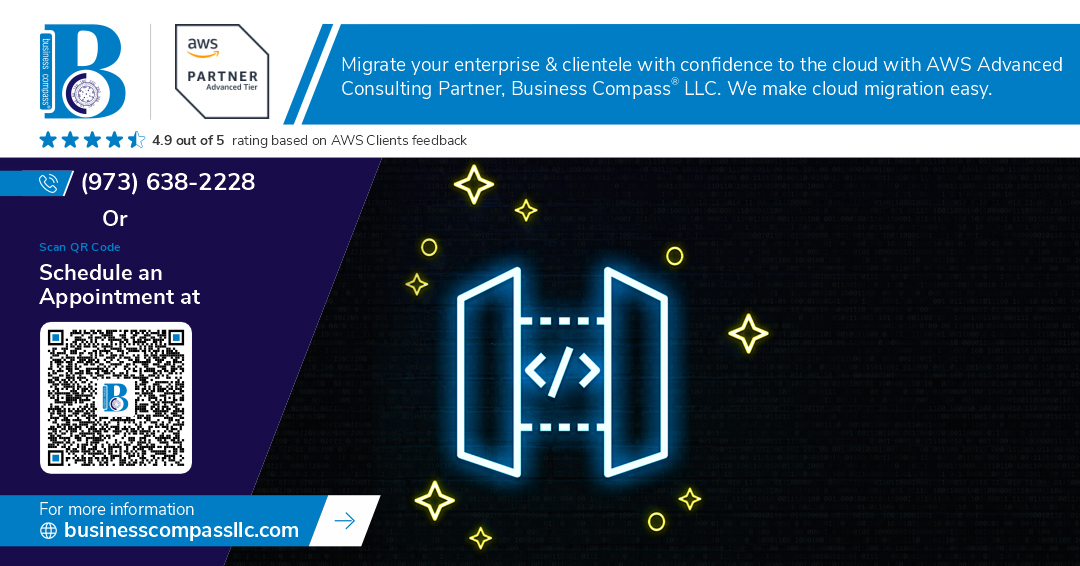Ever tried loading a page with a billion results? Your browser would literally catch fire, your RAM would scream for mercy, and you’d be staring at a spinning wheel until next Tuesday.
But when you browse Amazon’s 12 million products or scroll through Netflix’s endless content, it all feels… weirdly smooth. That’s API pagination working its magic behind the scenes.
For developers implementing API pagination in large-scale applications, this isn’t just convenient—it’s the difference between a functional product and a digital paperweight.
You might think you understand how this works. “Just load chunks of data as needed, right?” But there’s a rabbit hole of strategies most developers never explore.
And the approach you’re probably using right now? It might be costing you thousands in unnecessary server resources.
Understanding API Pagination Fundamentals
What API pagination is and why it matters
API pagination isn’t just a nice-to-have—it’s crucial when you’re dealing with massive datasets. Imagine requesting all billion products from Amazon in one go. Your app would crash, your users would bail, and servers would melt down. Pagination breaks these overwhelming data requests into manageable chunks, delivering only what users need when they need it.
How pagination enables efficient data retrieval
Think about flipping through a massive catalog. You don’t need all pages at once—just what you’re currently viewing. API pagination works the same way. Instead of pulling gigabytes of product data in a single request, it delivers bite-sized pieces (like 20-50 items) that match exactly what the user can see on their screen. This approach drastically reduces load times and bandwidth usage.
The performance impact of loading billions of products
Loading billions of products without pagination would be a disaster. We’re talking about:
| Without Pagination | With Pagination |
|---|---|
| 30+ second load times | Sub-second responses |
| Gigabytes of unnecessary data | Kilobytes of relevant data |
| Server resource exhaustion | Balanced resource usage |
| Timeout errors | Reliable performance |
| Frustrated users abandoning your site | Seamless browsing experience |
Your servers would buckle under the weight of those requests, and users would bounce before seeing a single product.
Key pagination approaches: offset, cursor, and keyset
The pagination world gives you options, each with their own sweet spots:
Offset pagination uses limit and offset parameters—simple but problematic for large datasets as it gets increasingly inefficient.
Cursor-based pagination passes a pointer to the last item you’ve seen, making it perfect for real-time data and infinite scrolling.
Keyset pagination (sometimes called “seek” pagination) uses unique identifiers and sorting values, making it blazing fast even with billions of records.
Implementing Pagination for Massive Product Catalogs
Implementing Pagination for Massive Product Catalogs
A. Setting optimal page sizes for different user scenarios
Ever tried drinking from a fire hose? That’s what happens when you dump too many products on your users at once. Mobile users might need just 10-20 items per page, while desktop users can handle 50-100. API clients doing bulk operations? They might want 500+. The trick is flexibility – let consumers specify their preferred page size, but always enforce reasonable limits.
B. Building cursor-based pagination for better performance
Forget about simple page numbers when you’re dealing with billions of products. They’re a performance nightmare waiting to happen. Cursor-based pagination is your best friend here. Instead of saying “give me page 573,” you’re saying “give me products after this specific point.” This approach handles insertions and deletions gracefully, avoids the duplicates or skips that plague offset pagination, and scales beautifully even when your catalog explodes in size.
C. Handling sorting and filtering alongside pagination
Pagination gets complicated fast when sorting and filtering enter the picture. Your cursors need to include both position and sort criteria. For example, when sorting by price, your cursor might look like {price: 29.99, id: 12345}. Always include a unique identifier as a tiebreaker – otherwise identical prices would break your pagination. And remember: changing filters or sort orders should reset pagination to avoid confusing empty results.
D. Implementing RESTful pagination standards
Don’t reinvent the wheel with your pagination implementation. RESTful APIs have established patterns worth following:
GET /products?limit=20&cursor=eyJpZCI6MTIzNDV9
Your response should include navigation links:
{
"data": [...],
"links": {
"self": "/products?limit=20&cursor=eyJpZCI6MTIzNDV9",
"next": "/products?limit=20&cursor=eyJpZCI6MjQ2ODh9",
"prev": "/products?limit=20&cursor=eyJpZCI6OTk5OX0="
}
}
This approach follows HATEOAS principles and makes client navigation intuitive.
E. GraphQL pagination strategies
GraphQL shines with connection-based pagination using the Relay specification. Instead of thinking about pages, you’re dealing with edges and nodes:
{
productConnection(first: 20, after: "cursor") {
edges {
node {
id
name
price
}
cursor
}
pageInfo {
hasNextPage
endCursor
}
}
}
This approach provides more context about the relationship between items and gives clients precise control over what data they receive – crucial when traversing massive catalogs.
Solving Common Pagination Challenges
Solving Common Pagination Challenges
A. Dealing with data inconsistencies during page transitions
Ever tried clicking “next page” only to see the same product twice? That’s a data consistency nightmare. When items are added or removed while users browse, your pagination logic needs to detect and handle these changes gracefully. The best solutions use versioned datasets or timestamps to ensure what users see stays consistent throughout their session.
B. Maintaining pagination state during user navigation
Users hate losing their place. When someone clicks a product, then hits back, they expect to return to the exact same spot in their results. Storing pagination tokens in browser history states or localStorage creates this seamless experience. Some top-tier implementations even use URL parameters to make paginated states shareable and bookmarkable.
C. Handling deleted items in paginated results
Deleted items are pagination’s silent killers. When a product vanishes between page loads, you need strategies to handle the gap. Do you pull in an extra item? Show a placeholder? The most elegant solutions adjust page counts on-the-fly while maintaining consistent page sizes through smart buffering techniques.
D. Managing pagination across multiple data sources
The real complexity hits when combining results from multiple sources. Imagine merging products from warehouses, marketplaces, and partner APIs into a single scrollable view. Smart implementations use parallel requests with unified cursor management and consistent sorting parameters to create a seamless experience that hides the underlying complexity.
Optimizing Frontend Experience with API Pagination
Optimizing Frontend Experience with API Pagination
A. Implementing infinite scroll with paginated APIs
Ever scrolled through Instagram and wondered how the content never seems to end? That’s infinite scroll magic. By detecting when users approach the bottom of a page, your app silently fetches the next batch of data via pagination APIs. No more clicking “next page” buttons. Just smooth, continuous scrolling that keeps users engaged with your billions of products.
B. Pre-fetching techniques for seamless page transitions
Smart apps don’t wait for users to reach the end before loading more content. Pre-fetching is like reading the room before someone asks a question. When a user hits the 75% scroll mark, your app should already be requesting the next data page. This anticipatory loading creates the illusion of instant access to endless product data, even when you’re handling billions of items behind the scenes.
C. Loading indicators and user feedback during pagination
Nobody likes staring at blank screens. While your pagination API works its magic fetching more products, keep users in the loop. Subtle loading spinners, skeleton screens, or progress indicators tell users “something’s happening.” The best loading states feel natural – not interrupting the browsing flow but reassuring users that more amazing products are just seconds away.
D. Client-side caching strategies for paginated data
Why refetch what you already have? Smart caching saves previously viewed pages in the browser’s memory. When a user jumps back to page 3 after browsing page 7, you pull that data from cache instead of making another API call. This approach drastically improves performance, reduces server load, and makes browsing through billions of products feel instantaneous rather than sluggish.
Real-World Pagination Success Stories
Real-World Pagination Success Stories
A. How Amazon handles billions of products efficiently
Ever wondered how Amazon lets you browse through their insane catalog without breaking a sweat? They’ve mastered the art of API pagination using cursor-based techniques. When you shop on Amazon, their backend intelligently chunks those billions of products into digestible pieces, only loading what you need when you need it. This keeps their app snappy even during Black Friday chaos.
B. Etsy’s approach to catalog pagination
Etsy faces a unique challenge with millions of handcrafted, one-of-a-kind items. Their pagination strategy combines offset pagination for shallow browsing with cursor-based pagination for deep category dives. What makes Etsy special is how they maintain consistent results even when sellers add new items mid-browsing session—something crucial for their marketplace dynamics.
C. Lessons from Google’s search result pagination
Google’s search pagination is a masterclass in balancing user experience with technical constraints. They’ve pioneered the “deep pagination compromise”—showing only about 10 pages of results while claiming billions exist. This approach acknowledges a key insight: users rarely go beyond the first few pages. Google optimizes for what matters, not theoretical completeness.
D. Social media feed pagination techniques that scale
Instagram, Twitter, and TikTok couldn’t exist without brilliant pagination. They use cursor-based pagination with timestamps as anchors, allowing infinite scrolling that feels magical. The secret sauce? They prefetch the next batch before you reach the bottom, creating that addictive seamless experience that keeps billions scrolling for hours.
Advanced Pagination Techniques for Enterprise Scale
Advanced Pagination Techniques for Enterprise Scale
A. Implementing stateless pagination for high availability
Ever tried juggling a thousand balls at once? That’s what servers do when handling billions of product requests. Stateless pagination is your secret weapon here – it doesn’t rely on server memory between requests, making your system bulletproof against failures. By passing all necessary pagination data in tokens or parameters, you maintain continuity even when requests hit different servers. This approach scales beautifully across distributed systems and keeps your product catalog browsing smooth as silk, no matter the traffic spike.
B. Sharding strategies for distributed product catalogs
When your product database gets massive, it’s time to slice that pie. Sharding distributes your catalog across multiple servers based on smart partitioning keys – maybe product categories, geographic regions, or custom algorithms. The magic happens when your pagination system understands these boundaries, seamlessly fetching results across shards while maintaining proper ordering. This lets you scale horizontally without breaking a sweat, keeping response times lightning-fast even as your catalog grows to astronomical sizes.
C. Leveraging Redis and other caching solutions
Caching isn’t just nice-to-have for enterprise pagination – it’s essential. Redis shines here by storing frequently accessed product pages and pagination metadata in-memory, dramatically reducing database load. Set up intelligent cache invalidation strategies so updates propagate quickly while maintaining that sweet, sweet speed. The best implementations layer caching at multiple levels – pagination tokens, result sets, and even pre-computed “next page” references – cutting response times from seconds to milliseconds.
D. Combining server-side and client-side pagination
The smartest pagination systems play both sides of the field. Server-side handles the heavy lifting – processing those massive datasets efficiently – while client-side pagination makes the interface buttery smooth. Implement infinite scrolling with windowing techniques that render only visible products, coupled with predictive prefetching that silently loads the next batch before users reach the end. This hybrid approach delivers the best user experience while optimizing both network traffic and server resources.
E. Handling pagination in microservice architectures
Microservices make pagination trickier but way more powerful when done right. Each service might own different product attributes, requiring orchestration for complete results. Implement a dedicated pagination service that coordinates requests across your architecture, aggregating and sorting data from multiple sources. Use consistent hashing and distributed cursor techniques to maintain ordering when data lives in different places. The payoff? A system that scales independently by domain while still delivering seamless pagination across your entire product universe.
Making Massive Catalogs Manageable Through Effective Pagination
API pagination transforms the overwhelming challenge of navigating billions of products into a seamless user experience. By implementing cursor-based pagination, handling proper error states, and optimizing backend resources, developers can build robust systems that maintain performance even at enormous scale. The techniques we’ve explored—from cache optimization to hybrid pagination approaches—provide the foundation for creating interfaces that feel responsive regardless of the underlying data volume.
As you implement pagination in your own product catalogs, remember that the best solutions balance technical considerations with user experience. Start with the fundamentals, measure performance carefully, and gradually introduce advanced techniques like prefetching and virtual scrolling as your needs evolve. The difference between a frustrating interface and a delightful one often comes down to these seemingly small details of how data is requested, delivered, and displayed. Your users may never know the complexity you’ve managed behind the scenes—and that’s exactly the point of well-designed pagination.




















